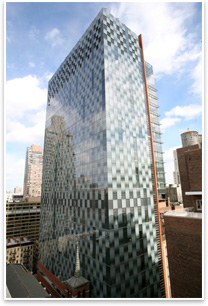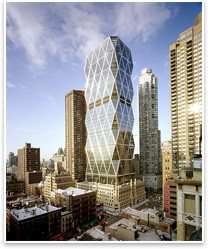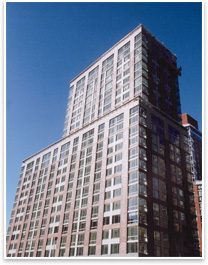
| Turner Constructs Sustainable Portfolio
The number of green projects Turner has completed or has under construction more than doubled from 85 to 195 by 2006, a 129-percent increase. The list of LEED-certified projects has grown to 34, and the number of LEED-registered projects currently stands at 65. These projects total more than 50 million square feet and are valued at over $12 billion. To keep up with the expanding projects, Turner’s 2004 aim to double the 42 LEED APs on staff in one year resulted in more than double that number in 2005; now there are 250 on staff. The Construction Waste Management Program has successfully diverted more than 83,000 tons of debris over the last two years. To continue the progress, Turner established a goal to divert more than 75,000 tons in 2007 alone. On the education front, in collaboration with U.S. Green Buildings Council, the Emerging Green Builders program has made tremendous progress, with groups forming across the country with financial support from Turner. In addition, a three-hour online training course, “The Essentials of LEED,” educates users on how to facilitate a Green building project and prepare anyone taking the LEED AP exam.
Cost versus benefit Before they jumped in with both feet, in early 2003 Turner spoke to clients, architects, and other stakeholders to assess the future of green design. “It became clear to me that green design was not the exception. Clients were clearly practicing it, and it was the future of design in the U.S.,” Wille says. Turner has commissioned studies to gather data and distinguish reality from perception. A survey of 700 real estate executives revealed that the majority of respondents recognized the benefits of green building but perceived higher first costs, which became obstacles to pursuing sustainable practices. Wille says that the real cost differential is little or negligible, with cost savings over time. With these figures and this ammunition in hand, educating the clients, staff, and became a priority.
Wille stressed that a key to a successful sustainable process is having all the stakeholders at the table participating in an integrated design process. He says building information modeling offers an even greater potential to advance sustainable construction. Green the future
Turner is also offering its support to the AIA 2030 Challenge, which aims to reduce energy use in new buildings by 50 percent by 2010, leading to a goal of a carbon-neutral building by the year 2030, and to the Clinton Climate Initiative Large Cities Partnership. Working with the USGBC, Turner will assist with the development and implementation of a plan to reduce greenhouse gases and increase energy efficiency in five U.S. cities. |
||
Copyright 2007 The American Institute of Architects. All rights reserved. Home Page |
||
home
news headlines
practice
business
design
recent related
› Value Engineering and Sustainable Design: The Commonality of Quality
Images courtesy of Turner Construction.
Image 1: Turner’s sustainable projects include Memorial Sloan Kettering, New York City.
Image 2: Turner’s sustainable projects include the Hearst Tower, New York City.
Image 3: Turner’s sustainable projects include The Verdesian, Battery Park City, N.Y.



